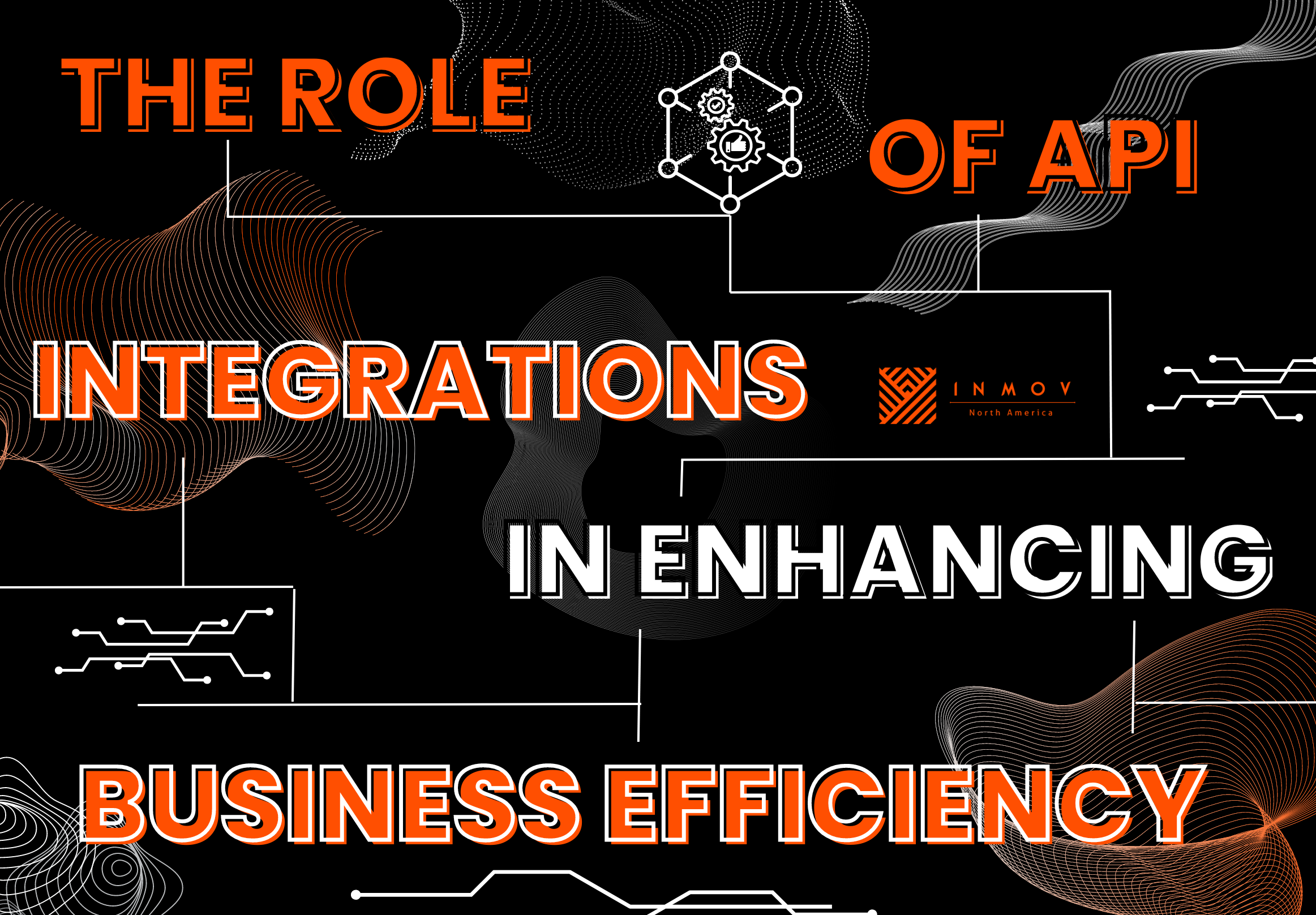- info@inmov.com
- ldaza-ct@inmov.com
- +1 786-983-5330
-
1111 Brickell Avenue
10th Floor. Miami, FL 33131
All rights reserved © 2024

If you’re involved in revenue, marketing, or operations, you’ve likely noticed an increasing
buzz around API integrations and their growing significance in your field. But … what is it?
“An API integration is the connection between two or more applications, via their APIs, that lets those systems exchange data. API integrations power processes throughout many high-performing businesses that keep data in sync, enhance productivity, and drive revenue.”(Tray,2024).
A well-designed API creates a collaborative environment that enhances trust, leadership, and teamwork. Its primary objective is to manage complex operations effectively. This collaborative approach seeks to streamline and standardize review and approval processes, delivering broad benefits across the industry.
But how does it work? API integration involves using APIs (Application Programming Interfaces) to connect multiple applications or systems, facilitating data exchange and operational actions. APIs provide a standardized method for different software applications to interact seamlessly.
By employing APIs, multiple systems can communicate in real-time, enhancing efficiency, reducing costs, and improving data reliability and accuracy. This interoperability through APIs not only streamlines operations but also ensures up-to-date and precise information exchange.
For instance, imagine your company operates a CRM (customer relationship management) system, while my company uses a CMS (content management system), and we need to share data between these systems. A long time ago, we might have relied on emails, manual uploads, or even postal communication to exchange this information. Now, with API integration, this data transfer occurs digitally and automatically, eliminating the need for manual intervention. API integration creates a conduit that allows our companies to do business with greater speed and precision.
So how does it help? By maintaining synchronized data across all connected systems, productivity receives a significant boost. This seamless integration ensures that data is always current and accessible, minimizing errors and reducing redundancy. As a result, organizations can leverage this consistent and reliable data to enhance operational efficiencies and make informed decisions. Ultimately, this streamlined approach empowers businesses to optimize their processes, improve customer experiences, and drive increased revenue.
Now, What are the Next Steps for Your Business for implementing API integrations?
In today’s digital landscape, API integrations are essential for enhancing business operations and facilitating seamless data exchange across various platforms. At Inmov, we specialize in crafting bespoke integrations tailored to meet the unique needs of your enterprise. But what does planning an API integration entail, and how can you implement it successfully within your company? Here are the key steps to consider:
1. Set Clear Objectives: Start by defining what you aim to achieve with the API integration. Identify the specific problems it will solve and how it will improve user interaction with your systems. Understanding these goals will guide the direction and development of the project.
2. Resource Allocation: Determine what tools, expertise, and personnel are required to build and maintain the integration. Ensuring you have the right resources in place is crucial for a smooth integration process.
3. System Architecture Analysis: Carefully analyze the interconnections between the data systems, platforms, applications, and business partners involved. This step is vital to ensure that the integration can facilitate efficient and error-free data transfer between all entities.
4. Development and Testing: Once your plan is in place, proceed with the development of the API integration. Follow the blueprint meticulously and conduct thorough testing to confirm everything functions as expected. It’s only after these rigorous tests that you should launch the integration for everyday use.
5. Performance Monitoring: After deployment, it’s important to continuously monitor the integration’s performance. Implement tools and procedures to evaluate how well the integration is working and to promptly address any issues that arise.
By integrating APIs, your business can automate processes, enhance data accuracy, and improve overall efficiency. At Inmov, we are ready to assist you with every type of integration, ensuring that your business harnesses the full potential of API technology. Now is the time to take the next step in advancing your company’s digital transformation journey!